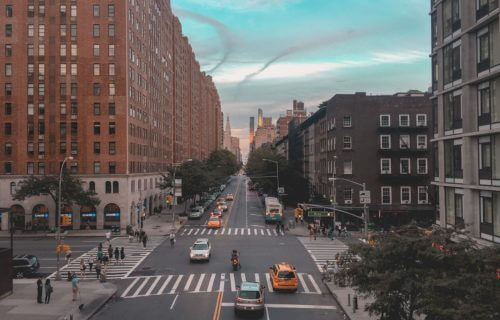LONDON — Does cutting speed limits and making things tougher on drivers really make busy cities safer? In recent years, places like New York City have rolled out plans like “Vision Zero,” which officials claim will reduce traffic deaths. However, a new study finds lowering speed limits to 20 miles per hour has little impact on road deaths or crashes.
Scientists say the tougher rules on motorists don’t even motivate drivers to slow down. Instead, they just lead to quieter streets with fewer cars.
The risks of pedestrian fatalities are between three-and-a-half and five-and-a-half times higher when the speed limit is between 30 and 40 mph than when they are between 20 and 30 mph, according to researchers from Queen’s University Belfast.
Schemes to reduce speeds to 20 mph have become increasingly popular, especially in the United Kingdom and across Europe. However, there is little evidence on their effectiveness and earlier studies have produced mixed results. Researchers add that few studies have covered the long-term outcomes of changing road policies.
How much of a difference does the speed limit make?
For the new study, the team looked at data on road traffic collisions, casualties, driver volume, and traffic speed in Belfast before, one year after, and three years after implementing 20 mph speed limits on 76 streets in the city center in 2016.
They compared the data with city center streets where the restrictions didn’t apply, as well as streets in the surrounding metropolitan area and similar streets elsewhere in Northern Ireland that kept their speed limits between 30 and 40 mph.
Study authors found a 20-mph speed limit was associated with little change in short or long-term outcomes for road traffic collisions, casualties, or driver speed. They also found reductions of three and 15 percent in the number of crashes after one and three years, but there was “no statistically significant” difference throughout the study.
Casualty rates fell by 16 and 22 percent one and three years after implementation, but these reductions “weren’t statistically significant,” according to the team. Average traffic speed fell by only 0.2 mph one year later and 0.8 mph three years after the rollout. Weekly traffic volume fell by 57 vehicles one year later and by 71 vehicles three years after the rollout.
Fewer people drive during rush hour
The largest reductions occurred during the morning rush hour, between 8am and 9am, when there were 166 fewer vehicles on the road per week compared with similarly matched streets where the 20-mph speed limit did not apply. A statistically significant decrease in traffic volume of 185 fewer vehicles a week was found when comparing all sites before and three years after the rollout.
“Previous research has suggested that 20 mph speed limit interventions should be supplemented with other interventions such as driver training, social marketing, community engagement, closed-circuit television (CCTV), in-car interventions, community interventions (eg, speed watch), and police communications,” study authors write in a media release.
“Such success may then have the capacity to facilitate an ambitious culture change that shifts populations away from the car-dominant paradigm and help us recognize that 20 mph speed limits are not simply a road safety intervention, but instead part of the fundamental reset of the way we choose our life priorities—people before cars.”
“Our findings showed that a city center 20 mph intervention had little impact on long-term outcomes including road traffic collisions, casualties and speed, except for a reduction in traffic volume. Future 20 mph speed limit interventions should consider the fidelity [enforcement], context and scale of implementation,” the team concludes.
The findings are published in the Journal of Epidemiology and Community Health.
South West News Service writer Gwyn Wright contributed to this report.

